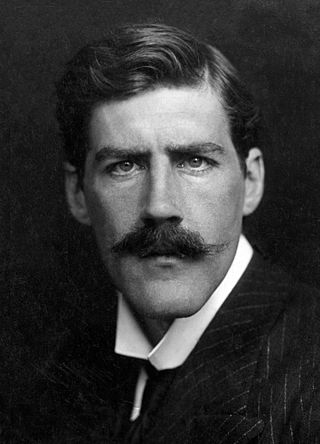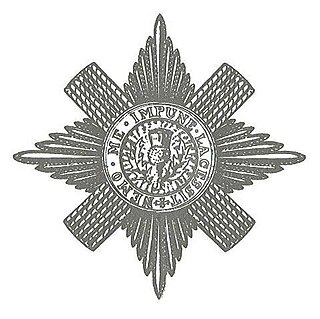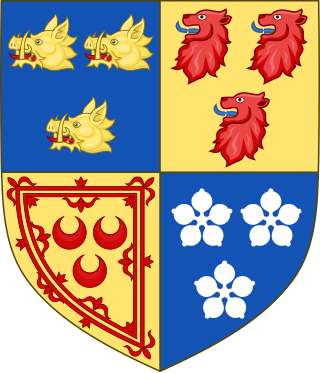The Peerage of the United Kingdom is one of the five Peerages in the United Kingdom. It comprises most peerages created in the United Kingdom of Great Britain and Ireland after the Acts of Union in 1801, when it replaced the Peerage of Great Britain. New peers continued to be created in the Peerage of Ireland until 1898.
There are currently two earldoms of Mar in the Peerage of Scotland, and the title has been created seven times. The first creation of the earldom is currently held by Margaret of Mar, 31st Countess of Mar, who is also clan chief of Clan Mar. The seventh creation is currently held by James Erskine, 14th Earl of Mar and 16th Earl of Kellie, who is also clan chief of Clan Erskine.

Earl of Balcarres is a title in the Peerage of Scotland, created in 1651 for Alexander Lindsay, 2nd Lord Balcarres. Since 1848, the title has been held jointly with the Earldom of Crawford, and the holder is also the hereditary clan chief of Clan Lindsay.

Earl of Lindsay is a title in the Peerage of Scotland. It was created in 1633 for John Lindsay, 10th Lord Lindsay, who later inherited the ancient Earldom of Crawford. The two earldoms remained united until the death of the 22nd Earl of Crawford, also sixth Earl of Lindsay, in 1808. Then the earldom of Lindsay passed to David Lindsay, while the earldom of Crawford became dormant because no-one could prove a claim to the title until 1848. Both David, 7th Earl of Lindsay, and his successor Patrick, 8th Earl of Lindsay, died without sons, and the disputed claim over the earldom was resolved by the House of Lords in 1878 in favour of Sir John Trotter Bethune, 2nd Baronet.

Earl of Northesk is a title in the Peerage of Scotland. It was created in 1662 for John Carnegie, who notably served as Sheriff of Forfarshire. He was given the subsidiary title of Lord Rosehill and Eglismauldie at the same time. Carnegie had already been created Earl of Ethie and Lord Lour in 1647 but relinquished those titles in exchange for the 1662 creations. For the purposes of precedence and seniority, the earldom of Northesk is treated as having been created in 1647, the date of the creation of the earldom of Ethie.

Earl of Caithness is a title that has been created several times in the Peerage of Scotland, and it has a very complex history. Its first grant, in the modern sense as to have been counted in strict lists of peerages, is now generally held to have taken place in favor of Maol Íosa V, Earl of Strathearn, in 1334, although in the true circumstances of 14th century, this presumably was just a recognition of his hereditary right to the ancient earldom/mormaership of Caithness. The next year, however, all of his titles were declared forfeit for treason.

Earl of March is a title that has been created several times in the Peerage of Scotland and the Peerage of England. The title derived from the "marches" or borderlands between England and either Wales or Scotland, and it was held by several great feudal families which owned lands in those districts. Later, however, the title came to be granted as an honorary dignity, and ceased to carry any associated power in the marches.

Earl of Carrick is the title applied to the ruler of Carrick, subsequently part of the Peerage of Scotland. The position came to be strongly associated with the Scottish crown when Robert the Bruce, who had inherited it from his maternal kin, became King of the Scots in the early 14th century. Since the 15th century, the title of Earl of Carrick has automatically been held by the heir apparent to the throne, thus the current holder of the title is Prince William, Duke of Rothesay.

David Alexander Edward Lindsay, 27th Earl of Crawford and 10th Earl of Balcarres,, styled Lord Balcarres or Lord Balniel between 1880 and 1913, was a British Conservative politician and art connoisseur.

Robert Alexander Lindsay, 29th Earl of Crawford, 12th Earl of Balcarres, Baron Balniel,, known by courtesy as Lord Balniel between 1940 and 1975, was a Scottish hereditary peer and Conservative politician who was a member of Parliament from 1955 to 1974. Lord Crawford and Balcarres was chief of Clan Lindsay and also acted, from 1975 to 2019, as Premier Earl of Scotland.

James Ludovic Lindsay, 26th Earl of Crawford and 9th Earl of Balcarres, KT, FRS, FRAS was a British astronomer, politician, ornithologist, bibliophile and philatelist. A member of the Royal Society, Crawford was elected president of the Royal Astronomical Society in 1878. He was a prominent Freemason, having been initiated into Isaac Newton University Lodge at the University of Cambridge in 1866.

Clan Lindsay is a Scottish clan of the Scottish Lowlands.
David Alexander Robert Lindsay, 28th Earl of Crawford and 11th Earl of Balcarres,, known as Lord Balniel from 1913 to 1940, was a British Unionist politician.

Alexander Seton, 1st Earl of Huntly, who adopted the family name of Gordon from about 1457, was a powerful 15th-century Scottish magnate. He was knighted in 1439/1440 and was Lord of Badenoch, Gordon, Strathbogie and Cluny.
David Lindsay, 8th Earl of Crawford was the son of Alexander Lindsay, 7th Earl of Crawford. He was a member of Clan Lindsay, a Scottish Lowland clan. He married Elizabeth Hay, daughter of William Hay, 3rd Earl of Erroll.
Alexander William Crawford Lindsay, 25th Earl of Crawford, 8th Earl of Balcarres, styled Lord Lindsay between 1825 and 1869, was a Scottish peer, art historian and collector.

James Lindsay, 24th Earl of Crawford and 7th Earl of Balcarres was an Earl in the Peerage of Scotland.

Balcarres House lies 1km north of the village of Colinsburgh, in the East Neuk of Fife, in eastern Scotland. It is centred on a mansion built in 1595 by John Lindsay (1552–1598), second son of David, 9th Earl of Crawford. The house became the family seat of the Earl of Crawford. The present house is the result of substantial extensions in the early nineteenth century, using part of a fortune made in India, but preserves much of the original mansion.
Robert Lindsay, 9th Lord Lindsay PC, was a Scottish landowner.
Anthony Robert Lindsay, 30th Earl of Crawford and 13th Earl of Balcarres, styled Lord Balniel between 1975 and 2023, is a Scottish peer and Chief of Clan Lindsay.












